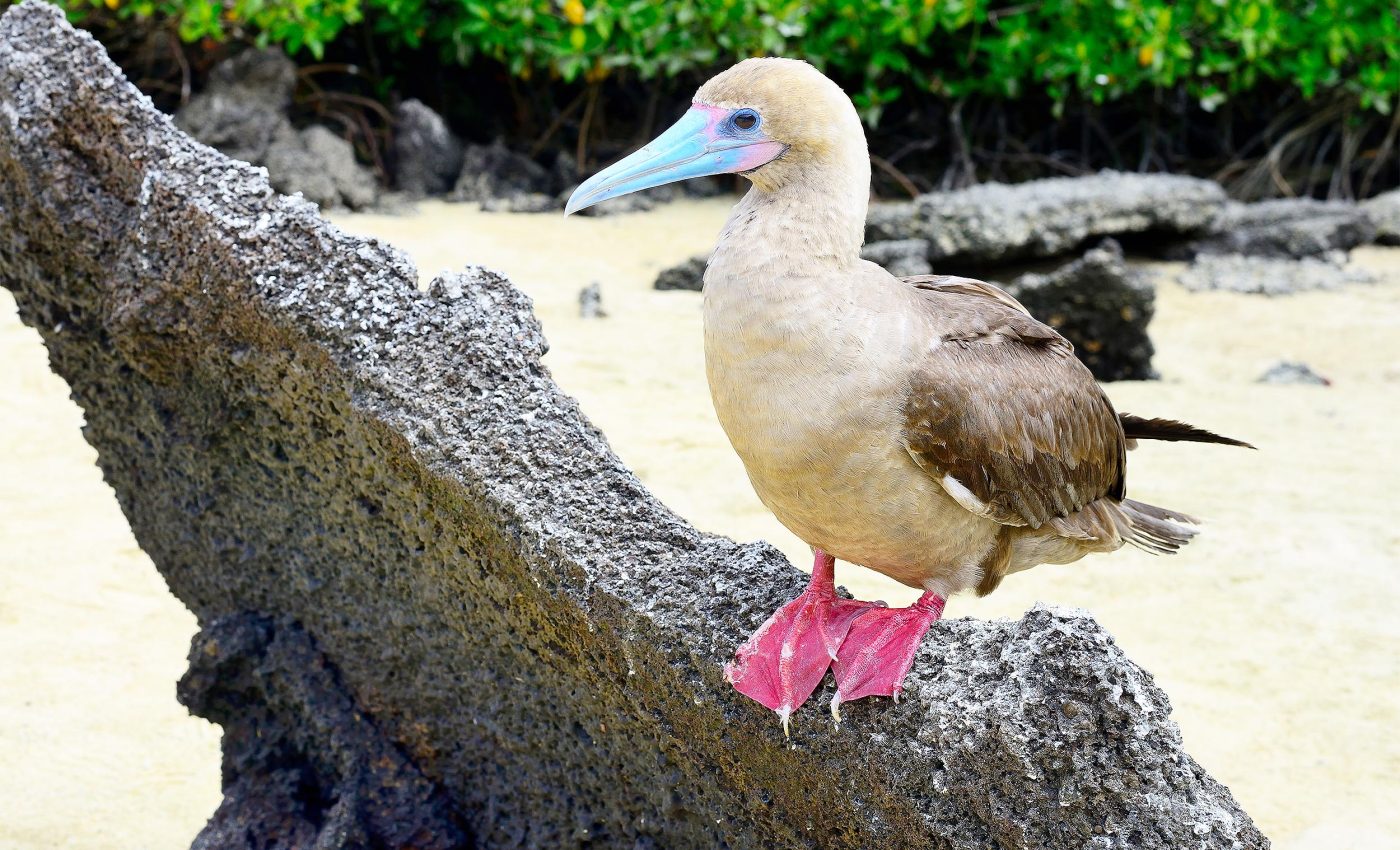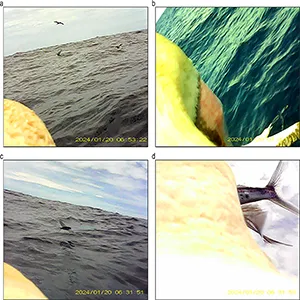
Seabird flights and amazing feeding behavior in the ocean captured with tiny cameras
Scientists have captured a remarkable glimpse into the high-speed lives of red-footed boobies. These seabirds, native to the Indian Ocean’s remote Chagos Archipelago, have been filmed mid-flight, catching flying fish.
The footage confirms a long-held suspicion: these birds can snatch fish directly from the air.
Researchers fitted two boobies with lightweight cameras. Of 15 prey capture attempts, 14 were aerial pursuits. Only one was a dive.
“The cameras recorded footage of the birds catching flying fish just above the surface of the water, while on the wing,” said Dr. Ruth Dunn, the study’s lead author from Heriot-Watt University.
“We suspected this happened, but this is the first time we’ve had bird-borne footage showing them foraging and catching fish mid-air. It could suggest they are catching a significant portion of their diet in this way.”
Optimal winds for catching fish
The study combined GPS and accelerometer trackers on 18 additional birds. The researchers tracked 45 foraging trips in total. The birds typically traveled hundreds of kilometers during each outing. These trips showed clear wind preferences.
Red-footed boobies are flap-gliding seabirds. They alternate between flapping and gliding flight. This style makes them efficient in tailwinds and crosswinds but not headwinds.
When heading out from the colony, they strongly preferred crosswinds or tailwinds. On their way back, they still used crosswinds but showed more flexibility.
The birds did not rely on familiar feeding spots. Their prey – mostly flying fish – is patchily distributed and unpredictable. Selecting optimal winds helps reduce energy costs during these long journeys.
Riding the wind to save energy
The analysis revealed a strong link between wind direction, speed, and flight behavior. Boobies flapped more when flying into headwinds.
The birds flapped less in crosswinds, and even less in tailwinds. These choices helped them maintain higher speeds while spending less energy.
The average ground speed reached about 22 miles per hour. When birds flew with crosswinds at high wind speeds, they moved fastest and glided more. In contrast, headwinds forced them to flap harder and slowed them down.
Seabird behavior linked to wind
Red-footed boobies were more likely to feed in windy conditions. Their feeding behavior – especially capturing flying fish – appeared closely linked to wind.
Flying fish can glide farther and stay aloft longer when supported by strong winds. This increases their exposure and gives boobies a better chance of catching them.
In fact, human fishers also report better catch rates for flying fish during high winds and larger swells. These conditions improve flying fish habitats through nutrient-rich upwellings.
The role of wave direction
Waves also played a role. Though wind and wave height were often linked, birds reacted differently depending on wave direction.
When waves aligned with the birds’ movement, feeding became more likely. The interaction between wind and wave direction likely affects both the birds and their prey.

Boobies have relatively low aspect-ratio wings. This gives them better turning agility, an advantage when chasing flying fish. In windy seas, such agility becomes even more important.
Outbound trips are less fixed. Boobies can experiment with wind choices while seeking prey. But inbound journeys are more direct. Even so, birds often chose crosswinds to return faster.
Seabirds in a changing world
As climate change alters global wind patterns, seabird behavior will likely shift. Some models predict stronger storms and higher wind speeds.
Others suggest long-term global stilling. Either way, red-footed boobies may benefit from increased winds on the ocean – at least up to a point.
“Gaining a clearer understanding of such environmental effects will enable us to predict how they will cope in the future,” said Professor Stephen Votier.
Extreme conditions such as cyclones may test these birds’ limits. Yet boobies seem more resilient to storms than many tropical seabirds. Their ability to catch aerial prey in strong winds gives them a potential edge.
Feeding zones need protection
This study links wind with both flight efficiency and feeding success, and shows how red-footed boobies use nature’s forces to boost survival.
With wind as both ally and obstacle, their future will depend on how the climate continues to shift.
Marine conservation should consider not just breeding islands but also wind-affected feeding zones. Protecting these dynamic habitats will be key to the long-term survival of this flying fish specialist.
The study is published in the journal Proceedings of the Royal Society B Biological Sciences.
—–
Like what you read? Subscribe to our newsletter for engaging articles, exclusive content, and the latest updates.
Check us out on EarthSnap, a free app brought to you by Eric Ralls and Earth.com.
—–













